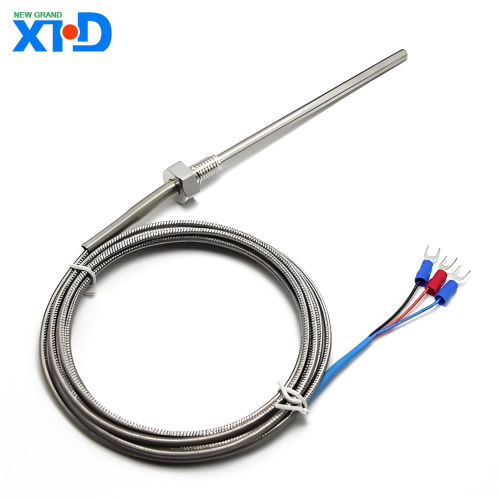
1. What is a temperature sensor?
A temperature sensor is a device that measures how hot or cold an object is, providing temperature measurements in a readable form through an electrical signal. The more common ones are thermocouples and resistance temperature detectors.
2. Types of temperature sensors In practical applications, there are many temperature sensors available, with different characteristics depending on the actual application. Temperature sensors consist of two basic physical types.
These types of temperature sensors require physical contact with the object being sensed and use conduction to monitor temperature changes. They can be used to detect solids, liquids, or gases over a wide temperature range.
These types of temperature sensors use convection and radiation to monitor temperature changes. They can be used to detect liquids and gases that emit radiant energy as heat rises and cold settles to the bottom in convection, or detect radiant energy transmitted from an object in the form of infrared radiation. Contact and non-contact temperature sensors are further divided into the following temperature sensors, and the principles of these temperature sensors will be explained next.

3. Temperature sensor principle
It is a contact temperature sensor consisting of a bimetallic strip composed of two different metals. The difference in the linear expansion coefficients of the two metals causes them to produce a mechanical bending movement when heated. Thermostat physical diagram
Thermostats consist of two metals with different heat levels bonded together back to back. When it is cold, the contacts close and current flows through the thermostat. When it gets hot, one metal expands more than the other, and the bonded bimetallic strip bends upward, opening the contacts and preventing the flow of current. Bimetallic thermostat physical diagram There are two main types of bimetallic strips, mainly based on their movement when subjected to temperature changes. There are "snap-action" types that produce an instantaneous "on/off" or "off/on" type action on the electrical contacts at the set temperature point, and slower "creep" types that gradually change their position as the temperature changes. Bimetallic thermostat working principle diagram Snap-action thermostats are commonly used in our homes to control the temperature set points of ovens, irons, immersion hot water tanks, and they can also be found on walls to control home heating systems. Creeper types usually consist of a bimetallic coil or spiral that slowly unwinds or coils as the temperature changes. The creeping bimetallic strip is more sensitive to temperature changes than the standard snap on/off type because the strip is longer and thinner, making it ideal for use in thermometers and dials, etc.
Thermistors are usually made of ceramic materials such as oxides of nickel, manganese or cobalt plated in glass, which makes them very easy to damage. Their main advantages over snap-action types are how quickly they respond to any changes in temperature, accuracy and repeatability. Most thermistors have a negative temperature coefficient, which means that their resistance decreases as temperature increases. However, there are some thermistors that have a positive temperature coefficient, and their resistance increases as temperature increases.
Temperature sensors are used a lot in life. We need to buy the right temperature sensor according to our needs. If you have any needs, please feel free to consult us!